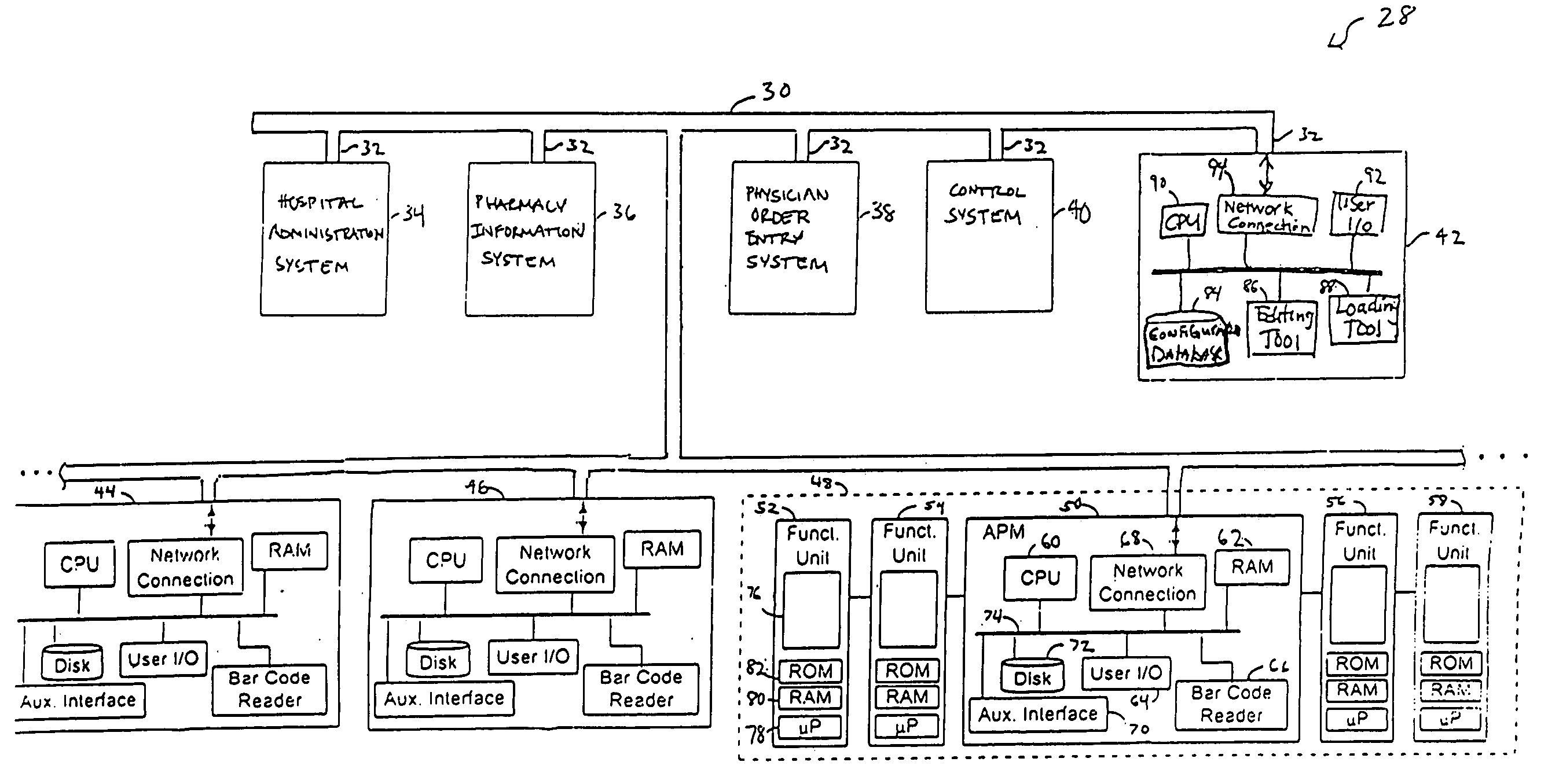System and method for managing medical databases for patient care devices
a patient care device and database technology, applied in the field of health care facility systems and methods, can solve problems such as increased treatment duration, reducing the accuracy and/or effectiveness of drug administration and patient care, and patient identification errors
- Summary
- Abstract
- Description
- Claims
- Application Information
AI Technical Summary
Benefits of technology
Problems solved by technology
Method used
Image
Examples
Embodiment Construction
[0040] The present invention provides a system and method for creating, managing and installing a universal configuration database or portions thereof and using this database to customize the behavior of patient care devices and systems in a healthcare facility according to the specifications of that facility. Additionally, the universal configuration database provides rules and parameters to facilitate communication between diverse patient care devices from multiple manufacturers.
Digital Communication Network
[0041] Referring now to drawings in which like reference numerals are used to refer to like or corresponding elements among the figures, there is generally shown in FIG. 1 an integrated hospital-wide information and care management system 28 in accordance with aspects of the present invention. Various subsystems of the facility's information and care management system are connected together by way of a communication system 30. The communication system 30 may be, for example,...
PUM
 Login to View More
Login to View More Abstract
Description
Claims
Application Information
 Login to View More
Login to View More - R&D
- Intellectual Property
- Life Sciences
- Materials
- Tech Scout
- Unparalleled Data Quality
- Higher Quality Content
- 60% Fewer Hallucinations
Browse by: Latest US Patents, China's latest patents, Technical Efficacy Thesaurus, Application Domain, Technology Topic, Popular Technical Reports.
© 2025 PatSnap. All rights reserved.Legal|Privacy policy|Modern Slavery Act Transparency Statement|Sitemap|About US| Contact US: help@patsnap.com



